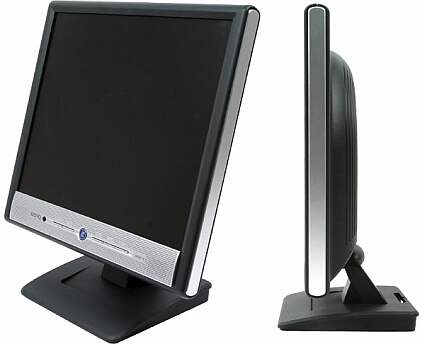High-End LCD: Samsung and BenQ
BenQ FP767-12
Announced in January and now available, the FP767-12 is one of the first screens to be certified by the manufacturer as having a response time of 12 milliseconds. Inside, the panel is made by AU-Optronics.
Ergonomics
The plastic case is well designed and looks good. But when examined up close, it tends to lack a certain finesse, thus justifying its positioning as a mid-range product.
In the same vein, the ergonomics of the monitor are rather superficial. The FP767-12 is not height-adjustable, and has only one analog input. Due to its use of TN technology, the angle of vision remains rather narrow. Fortunately, all of these points are partly compensated for by a very clear OSD menu and the integration within the screen of the electrical transformer, which is very much preferable to an external transformer (as in the 172X).
Colors
The default colors are bright, strongly contrasted and very attractive. People who have just graduated from a CRT may be a little taken aback by the excessive luminosity of the monitor, however. They have a point, as the default white setting is 226 cd/m². To get to a level close to that of CRT screens, the brightness should be reduced by half.
Reducing the brightness by 30/100 and increasing the contrast to 65/100 enabled us to measure a white level of 145 cd/m², to get a more faithful and deeper black, and generally a more faithful color rendering.
Get Tom's Hardware's best news and in-depth reviews, straight to your inbox.
What this means is that BenQ could easily have offered better default settings.
| BenQ FP767-12 | Default setting | After adjustment |
|---|---|---|
| White | 225 cd/m² | 131 cd/m² |
| Black | 0.49 cd/m² | 0.32 cd/m² |
| Contrast measured | 458: 1 | 409: 1 |
The default image is good, but after making adjustments, it becomes genuinely impressive. The color rendering from black to white is almost perfect. Hats off to AU.
Interpolation
BenQ has not yet found THE solution for correctly interpolating images. At 1280 x 1024, which is the native screen resolution, the image interpolation is very good, and the sharpness is excellent. After that, the further you move away from that resolution, the more the images deteriorate. So gaming just wouldn't work on this monitor, even at 1024 x 768.

